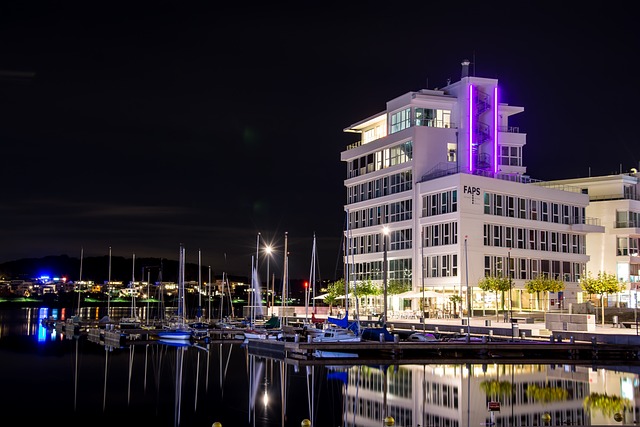Real estate developers shape urban landscapes through large-scale projects, driving economic growth and housing demand. By collaborating with governments and planners, they navigate regulations to create sustainable spaces that align with cities' evolving needs. Strategic market research, community connection, and partnerships enable professionals to secure prime locations and contribute to vibrant urban ecosystems. The real estate sector faces challenges like high demand, land scarcity, and sustainability requirements, but opportunities lie in mixed-use developments, smart buildings, and eco-friendly designs. Adaptability and innovation are key to thriving in this competitive, ever-changing landscape.
In the dynamic landscape of modern business, understanding the intricate relationship between real estate and urban growth is paramount. As cities expand rapidly, real estate becomes both a driver and a barometer of economic health. This article explores the interconnection between these forces, offering strategies for businesses to capitalize on urban development while examining the challenges and opportunities in the ever-evolving real estate market. Discover how savvy investors and developers are navigating this dynamic environment to secure sustainable growth.
The Interconnection Between Real Estate and Urban Growth

Rapid urban development is often driven by real estate growth, creating a symbiotic relationship between the two. As cities expand, the demand for housing, commercial spaces, and infrastructure increases, fueling the real estate market. Developers play a pivotal role in shaping urban landscapes by investing in large-scale projects, which can include mixed-use developments, skyscrapers, or revitalized neighborhoods. These ventures not only cater to the growing population but also contribute to the city’s economic vitality and overall aesthetic appeal.
The interconnection is evident in how real estate developers collaborate with local governments and urban planners to navigate regulatory frameworks and zoning laws. By understanding the dynamics of urban growth, they can strategically acquire land, anticipate future needs, and design sustainable spaces that align with the evolving character of the city. This careful navigation ensures that the built environment keeps pace with demographic shifts, technological advancements, and changing lifestyles, ultimately contributing to a thriving urban ecosystem.
Strategies for Capitalizing on Rapid Urban Development

With rapid urban development comes immense opportunities for business growth, particularly in the real estate sector. One key strategy is to stay ahead of the curve by identifying emerging trends and hot spots within cities. This involves extensive market research and staying connected with local communities to understand their evolving needs. Developers and investors who can anticipate these shifts will be best positioned to capitalize on prime locations before they become saturated. For instance, focusing on mixed-use developments that combine residential, commercial, and recreational spaces is a growing trend in many urban centers.
Another effective approach is to collaborate with local governments and community leaders to shape the future of cities. By participating in urban planning processes, real estate professionals can secure access to exclusive sites and ensure their projects align with sustainable and smart city initiatives. This strategic engagement not only fosters positive relationships but also contributes to creating vibrant, livable spaces that attract businesses and residents alike.
Challenges and Opportunities in the Evolving Real Estate Landscape

The evolving real estate landscape presents a double-edged sword, offering both significant challenges and vast opportunities for businesses seeking growth. Rapid urban development, characterized by expanding metropolises, is driving demand for commercial and residential spaces. However, this surge in demand comes with its complexities; soaring property prices, land scarcity, and the need for sustainable infrastructure pose significant hurdles. Real estate investors and developers must navigate these challenges to stay competitive.
On the other hand, the dynamic nature of urban growth creates numerous opportunities. Emerging trends such as mixed-use development, smart buildings, and eco-friendly design are reshaping the industry. Adaptability and innovation are key; businesses that can anticipate future market shifts, cater to changing consumer preferences, and embrace sustainable practices are poised to thrive in this evolving real estate environment.






